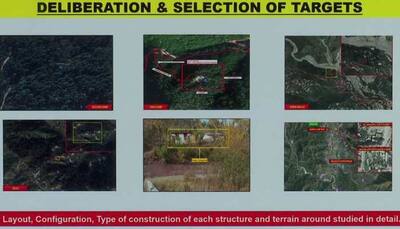New Delhi: Signaling a shift in how regional conflicts are being waged, India executed a sophisticated campaign of electronic misdirection and surgical airpower to neutralise Pakistan’s frontline airbases. A web of decoys, digital warfare and long-range precision missiles left Pakistan scrambling for cover in a modern war masterclass.
While the world watched in silence, Indian forces pulled off a bold military offensive as part of Operation Sindoor – involving fake radar signatures, autonomous munitions and precision-guided strikes that overwhelmed Pakistan’s defensive grid before it could respond.
Indian defence planners employed a decoy-first strategy: launching dummy unmanned aircraft with radar signatures mimicking Indian Air Force (IAF) fighter jets. These “ghost planes” were never meant to strike but to provoke a reaction. The trap worked. Pakistani air defence systems got activated, revealing their hidden radar positions and missile batteries.
That is when the real offensive began.
With enemy systems exposed, India deployed a mix of loitering munitions – drones capable of circling a target before striking – along with long-range missile systems. These included Israeli Harops and homegrown BrahMos units.
The missiles, as per reports, were not only aimed at physical structures but also targeted communication nodes and radar arrays. It effectively blinded large parts of Pakistan’s defensive infrastructure.
Among the high-value targets reportedly struck were airbases in Sindh and Punjab provinces, where critical surveillance and drone assets were either destroyed or rendered inoperable.
Military observers say that the operation was not just about retaliating, it was about reshaping the rules of engagement.
Reports suggest that 11 out of 12 forward Pakistani airbases were put out of commission or severely degraded, forcing their air force to relocate assets deep into the interior.
A particularly costly loss appears to be an airborne early warning aircraft reportedly struck while still on the ground – an incident described by analysts as a major intelligence blow to Pakistan’s aerial capabilities.
Caught off-guard by the pace and precision of the operation, Pakistan’s military command, according to the reports, requested high-level talks mere hours after the strikes began. Within the day, Director General of Military Operations (DGMO)-level discussions were initiated, and both sides agreed to a ceasefire by late afternoon.
This campaign marks the first known combat use of several advanced Indian assets, including the BrahMos supersonic missile system in active conflict. Military experts note that the success of the mission lay not just in the firepower, but in the sequence – deception, exposure and strike – executed with digital finesse.
What unfolded was not merely a retaliatory strike but a demonstration of how modern warfare now transcends dogfights – a calculated, multi-layered digital battlefield where perception can be weaponised just as powerfully as precision.
Stay informed on all the , real-time updates, and follow all the important headlines in and on Zee News.








